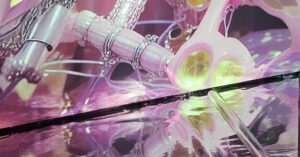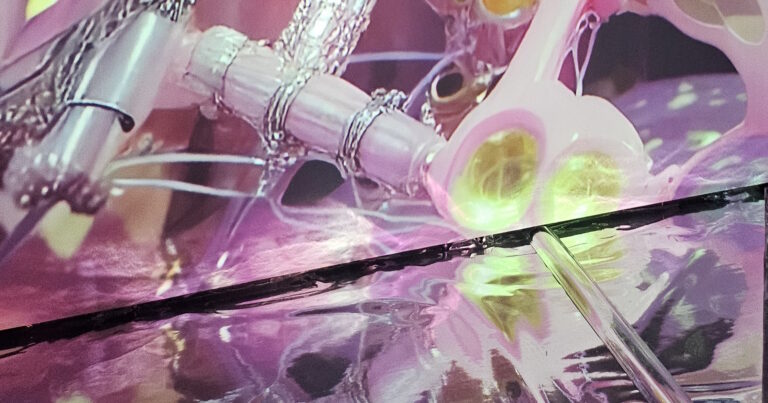This year, the great Sarabande that is our Milan Design Week took me by surprise, in the middle of a huge and important project I couldn’t (and wouldn’t) dodge. I haven’t missed a Salone since 2009, when I cought the Orthomyxovirus (and if you know me, you probably already heard the stories). This year I did. Again. So you won’t read me writing about the fair: I have no clue.
I haven’t seen much of the Fuorisalone as well, but what I saw I must say I enjoyed. A lot. Because of good company, mostly, and partly because I really need good company and beautiful things when I’m in distress. Therefore, I’ll admit that I might have overreacted to certain things, and if you didn’t enjoy what I did, just consider the state of mind I was into.
Long story short, there you go. My personal top something for this year design week.
1. Sou Fujimoto with COS: The Forest of Light
..
I really liked this installation, partly because it held place in a location I was profoundly attached to as a kid: former movie theatre Arti. It wasn’t the only design-fashion collaboration I saw (and liked) this year, and I feel like the design week is getting more and more contaminated by the fashion week.
Spotlights on a high ceiling, with vertical narrow beams, turned on and off at the delicate rhytm of a soft music, and it was very natural for people to roam and dance around, in that delicate oniric atmosphere.
“These lights pulsate and constantly undergo transience of state and flow. People meander through this forest, as if lured by the charm of the light. Light and people interact with one another, its existence defining the transition of the other.”
Charming, and beautiful.
2. An evening at Marni Ballhaus
..
Another installation by another fashion house gave us the gift of a beautiful Colombian evening with dances and coreographies. I was unfamiliar with the cumbia, the traditional Colombian dance. Full circular skirts were reinvented with iconic Marni fabrics, along with the knotted scarves used by male dancers, and were hanged in some sort of entrance cage, at the centre of which live music was playing. It’s always amazing to see how music and colour (and alcohol) can bring people together.
3. Elle Decor at Palazzo Bovara
When something is happening in corso Venezia, you simply must go and see it. Expecially if you haven’t yet been inside one of the beautiful palaces. You can’t really have a full understanding of what Milan has been about for the past four centuries if you haven’t been there.
So, I was really happy to know that Elle Decor was hosting an exibition at Palazzo Bovara, one of the most beautiful establishment in the street.
And the exhibition, Soft Home, really was worthy of its setting. With its subtitle being Housing and Digital Experience, it was yet another proof of how you can’t disconnect design from technology nowadays. Marvellous glass doors telling you the weather in Amsterdam went together with a mirror asking you to smile and breathe for a good cause. Domotics and tables you could play on like amplified drums. Internet of Things as if there’s no tomorrow. And if Elle Decor does it, you can say it’s really trending.
4. Interni in Statale
..
Always cool and charming, even if this year it was a little bit underwhelming, the “Open Borders” exhibition counted few good pieces like MAD architects’ invisible border, or Stefano Boeri’s Radura (not exiting during daylight, but really charming at the evening with Japanese ladies roaming around in beautiful kimonos). Parisotto & Formenton’s installation was also interesting, even if quite difficoult to understand in its setting: their “stanza del vuoto” was a mimick of a Milan in black and white, the recreation and reinterpretation of a setting in “La Notte” with the most beautiful Monica Vitti.
I was most deluded by “La Casetta del Viandante”, a group of design shelters by De Lucchi, Ferreri, Giovannoni and Santachiara, which looked a little bit like the poorer version of last year’s installation at Brera’s Orto Botanico. Too bad.
5. Audi City Lab in Torre Velasca
..
It’s always amazing how many mixed feelings you can get towards this iconic building. Lots of people idolize it. An equal amount really really hate it. Personally, I walk below it every day and I never stopped to consider it. It just was, if you get what I mean, and I’m afraid that’s a very Milanese way of looking at things. Nevertheless, I stopped and stopped for good when I was Velasca’s facade painted with red light and the Audi logo.
6. Lexus – An Encounter with Anticipation
..
I have always been a fan of Formafantasma. I think they are very gifted, and they are able to communicate with delicacy lots of extremely complicated concepts. This installation was no exception. In three different steps, they recreated a difficoult relationship between industrial design and automotive.
– Vedere l’invisibile (Seeing the invisible, room 1) was all about care and detail;
– Dare forma all’intangibile (Shaping the intangible, room 2) was a beautiful restyling of LF-FC interiors;
– Percepire l’impercettibile (Percept the imperceptible, room 3), the most interesting and fascinating part, was a series of kynetic sculptures powered with hydrogen.
7. Tecno – Connections, Connectors & Connectivity
Migliore + Servetto connects the two “tollbooths” (caselli) with a net of red wires spreading for 1 km across the square. And, of course, there was Internet of Things (drink up).
8. Moleskine, trying to digitalize our doodles
..
I’ve been using one of these on construction site while I was in Amsterdam, and it wasn’t that bad but wasn’t that good either. The smart writing set was interesting to try out, though it’s still a bit bulky and leaves you with the impression of writing like an ancient Chinese calligrapher. Which is very nice for a concept but very bad for everyday life. Still, I’m happy to see technology going this way: I’m all for hand sketching, expecially in the conceptual phase, but I wouldn’t mind a smart tool to digitalize it all in real time.







No Comments